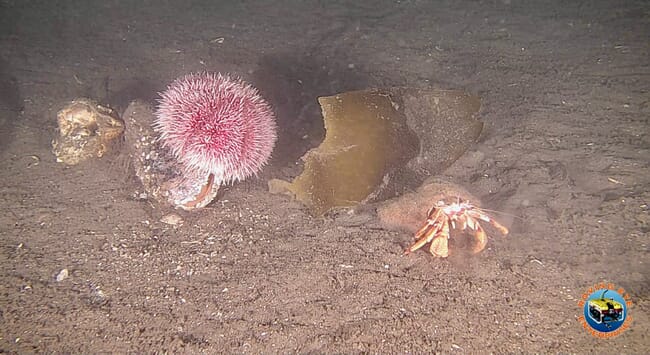
© Scottish Sea Farms
The company’s head of sustainability and development, Anne Anderson, said that a new science-based environmental monitoring programme to explore the ability of the seabed to regenerate is delivering promising initial results.
“Building on previous work at regional level, we have been analysing the benthic conditions of seabed sediment samples from fallowed sites around our farming estate. The initial findings are promising, indicating, as we have long argued, the ability of the marine environment to regenerate,” she explained in the latest edition of company newsletter, The Source.
At Lismore North in Loch Linnhe, where the company has farmed for over 30 years prior to fallowing the site in early 2019, recent sampling indicates that, in the three years since, significant recovery has taken place – with faunal diversity now on par with before farming took place. More recently, following a nine-month fallow period at Scottish Sea Farms’ Toyness site in Orkney, the range of animals and their abundance was found to have increased significantly.
“The more post-fallow analysis we can do, be it several months or many years after a farm has been harvested, the more insights we will glean, the aim being to increase wider understanding of just how regenerative salmon farming really is in relation to seabed restoration,” said Anderson.
Discussions are now underway with fellow salmon producers regarding rolling out this additional environmental monitoring sector-wide, with plans for the shared findings to be reviewed by a leading independent scientist.
“Salmon farming has one of the lowest carbon footprints of all the animal protein producing sectors, it produces more edible meat per tonne of animal feed used, and here in Scotland and the wider UK we are one of the most valuable food exports. Yet there remains a degree of caution about the sector, stemming from a lack of science and understanding. With this new environmental monitoring programme, we hope to chip away at that,” she reflected.
According to Anderson, the need for more evidence in this area takes on heightened importance against a backdrop of Scottish Government proposals to designate at least 10 per cent of Scotland’s seas as Highly Protected Marine Areas (HPMAs), which would see several key commercial activities banned, including fishing and aquaculture.
As she explained: “The proposals fail to take into account the regenerative nature of salmon farming, just as they fail to acknowledge that Scotland’s salmon farmers have been co-existing with Marine Protected Areas for many years already.
“As with wild Atlantic salmon, our farmed salmon require high quality water if they are to live and thrive, therefore it’s in our own best interests as a sector to protect our marine environment.
“We know it. It’s why we invest so much time, effort, and resource into minimising any impact from our activities, ensuring we’re able to successfully farm at locations year after year – in the case of our longest-established farm, at Dunstaffnage, for as many as 36 years.
“The priority now is demonstrating it to regulators and other key decision-makers.”



